Top News

A survey of 62 ACOs finds that many lack tools for risk management and patient engagement and haven’t made much IT progress in the last year. Every respondent said they have problems getting data from external organizations as they struggle with interoperability, workflow integration, and infrastructure maintenance. Few of them use secure messaging, referral management tools, self-scheduling, remote monitoring, smartphone apps, or telemedicine. Most do not coordinate care via an HIE.
Reader Comments

From Bucolic Splendor: “Re: Practice Fusion. Was down most of the day Wednesday, a major catastrophe for practices all over the country. Nobody really believes their explanation.” Practice Fusion blames its multi-day downtime on unnamed third parties, their data center partner, and a “global Internet brown-out.” Strangely, some users could access the system on their phones only, others could get on with the Safari browser but not Chrome, while some users said they could get partial access by turning off Shockwave. Users ripped the company in Facebook messages for not answering the support line and failing to provide updates as their practices sent patients home without treatment. The bottom line: get SLAs from your cloud-based vendors (so the burden of reviewing their infrastructure is theirs, not yours) and make sure you have a local information retrieval option since even Internet connectivity itself isn’t guaranteed. The cloud is great except when it isn’t and then you’d give anything to have that under-the-desk server back. Some user comments:
- “I just had a consultation with a patient I only see once monthly and I had no idea what we talked about last time.”
- “Don’t care about your acquisition since I can’t see my patient charts!”
- “Practice Fusion deleting comments & removing unfavorable forum threads is a BAD IDEA. One step away from charging for negative reviews. Spend more time on keeping the system up, and less time combing your social rep.”
- “It is amazing how many people there are out there who is getting a superb free handout and then bite the hand that feeds them. And you are supposed to be professionals. Give me a break. Go out and actually pay for another premium service. Then you will have every right to bitch when things go wrong.”
- “I see lots of photos of team-building games and fun … and bravo for that … but it appears there is less emphasis, as David Stewart suggested, on building infrastructure and contingency plans. Your suggestions to have a backup server and hub do us no good when the problem in on your end.”
- “We may be looking for another EMR system. I’ve been relatively happy with the program when it functions, but the lack of adequate support has challenged our practice more than once.
- “Although it is free to medical provider, some huge advertisers are paying big dollars and are the ones allowing it free for us. I hope they are aware of this inconvenience.”
- “For everyone that is frustrated, how long have you been with PF? How many times has it gone down? I’ve been with them for 3 1/2 years and had a total of 4 hours of unplanned down time.”
- “I am OK with a Day or 2 of outages, but this is a wake up call to how much we rely on you. Next time it might be a security issue and we are helpless to do anything about it. I would feel better knowing that if there is a catastrophe, I at least have a backup that I can use to go forward with. Maybe even a paid option – like $50 a month to be able to do a daily backup to my local computer.”

From Reluctant Epic User: “Re: new Epic patent. I’m surprised the patent examiner thought that was novel for a Level of Service user interface.”

From Details … Details: “Re: Habersham Medical Center. With Meditech’s industry-leading 800+ attestations, it would seem that there might be some missing information here.” I don’t doubt that a bit – it was the client that said it was a software problem. However, they also fired the IT director, so that plus Meditech’s lack of attestation problems elsewhere seems to put the blame on the hospital.

From ShoezyQ: “Re: sharing hotel rooms. At the Allscripts user group meeting and annual sales meeting, the company requires employees to share hotel rooms. Maybe they should just send fewer people if they can’t afford the rooms. Can you ask your readers? I would never share a room with a colleague.” I’m with you. I bet Paul Black isn’t bunking up with Jim Hewitt at a Motel 6 and coordinating bathroom times, apologizing for snoring, and agreeing on the TV channel, so the policy is just for the “little people” who weren’t born with a suit on. It’s a pretty cheap company that requires employees to work a company event (which probably also means putting in a ton of excess unpaid hours away from home) and then forces them into steerage to save a few bucks. Maybe the peons could cook ramen noodles in their room’s microwave to save even more money. My strategy would be: (a) ask if you can apply your half-room cost to a single room and pay the difference for your privacy; (b) say you have sleep apnea and use a very loud CPAP machine that will keep your roomie up all night; or (c) find a new employer who values your dignity over their dollars. Meanwhile, I will ask readers as you requested: take the poll here and feel free to explain your employer’s policy via a comment.
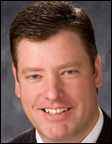
From John Britton: “Re: Cerner acquires Siemens. I am the CIO at a medical center that uses Cerner as our primary EMR as well as their Smart Room technology. We also use Siemens MedSeries4 for General Financials (AP, MM, GL). In 2010 we became one of the first Cerner ‘smart’ hospitals when we went live with this technology in 2010. Since then, I’ve had a front-row seat to the work Cerner has done to connect medical devices to the EHR through their CareAware ecosystem. Avoiding duplicative data entry and preventing errors are some of the biggest benefits of this approach. I think Cerner’s acquisition of Siemens will only accelerate their work to connect different data sources to the EHR. It might also help get closer to realizing more comprehensive interoperability and data sharing models between disparate information platforms using initiatives currently underway like the CommonWell Health Alliance.” John is CIO of Fisher-Titus Medical Center in Norwalk, OH.
HIStalk Announcements and Requests
This week on HIStalk Practice: HHS spends precious man hours (and taxpayer money) attempting to find emails related to the Healthcare.gov rollout. ONC launches a website to collect feedback on its interoperability roadmap. HIPAA worries cause OBs to remove baby pictures from their office walls. Dr. Gregg explains how HIT leads to HID. The Healthcare Administrative Technology Association opens for business. Investors outline their attraction to healthcare IT firms in Nashville. Square’s new appointment-booking feature poses potential HIPAA concerns for small practices. Thanks for reading.
This Week on HIStalk Connect: HealthMap, a Boston Children’s Hospital and Harvard Medical School collaboration, combines public health data, Twitter data, and Google news alerts to track the recent Ebola outbreak with greater accuracy than the World Health Organization. Apple is reportedly in discussions with Allscripts, Johns Hopkins, Cleveland Clinic, and Mount Sinai to generate support for its HealthKit rollout. Validic raises a $5 million Series A round that it will use to expand its digital health integration engine and grow its customer base.

The first book written by ”CIO Unplugged” Ed Marx of Texas Health Resources will be released in late September. Watch for details of the upcoming virtual book launch for “Extraordinary Tales of a Rather Ordinary Life: How Applying Common, Everyday Principles Can Lead to Uncommon Results” on HIStalk.
Listening: new from The Gaslight Anthem, a hard-rocking New Jersey working class band that sounds like Springsteen backed by the Ramones. Also: new hard rock from the latest of several incarnations of Fuel from Henderson, TN – none of the 16 people who have played in the four-piece band’s 21-year history were in it continuously, but they always sounded good.
I had a cool customer support experience today with one of our webinar tools. I had opened a ticket since the company basically rewrote the web-based software without instructions or updates to the knowledgebase. The support rep emailed me a screen capture movie showing how to do what I needed to do, even having a little one-way chat with me as he stepped through it. It would have taken him three times as long to write out the steps instead of just turning on Camtasia or whatever capture software he used to dash off a quick video. That was both brilliant and personal, exactly what you want from a support tech.
BOSS Award Winner – Riton Khan

Several people nominated Riton Khan for the HIStalk Beacon of Selfless Service (BOSS) Award. Riton is an HISP/iNexx deployment engineer with Medicity.
Adam Rossback of the Ohio Health Information Partnership said in his nomination, “Riton spent countless hours working with me to establish HISP integration with our organization to allow 30+ hospitals to attest for July MU2 attestation.” Donna Maxey of Healthcare Access San Antonio says Riton went above and beyond his job description by working through EMR integration issues with her clients, adding, “Whenever I felt my client was stuck, no matter what the issue was, I asked for a meeting and Riton would send me a screen shot of his calendar. He allowed me to pick any open day/time that the client’s vendor was available. I have yet to work with any vendor employee that is that transparent so that my clients could get the project done on time.” Several other of Riton’s customers added their accolades.
Congratulations to Riton for his excellent work, which makes him entirely deserving of both the thanks of his customers and the BOSS Award.
You are welcome to nominate a non-management individual for BOSS Award recognition.
Webinars
August 27 (Wednesday) 1:00 p.m. ET. Enterprise Data – Tapping Your Most Critical Asset for Survival. Presented by Encore, A Quintiles Company. Presenters: Jonathan Velez, MD, FACEP, CMIO, Hartford Healthcare; Randy Thomas, Associate Partner, Encore, A Quintiles Company. This first of a webinar series called “It’s All About the Data” will describe the capabilities provider organizations need to become data driven. The presenters will provide an overview of the critical role of an enterprise data strategy, creating the right data from source systems beginning with implementation, real-world data governance, how to avoid “boiling the ocean” with an enterprise data warehouse, and the role of performance feedback to transform analytics insights into improved outcomes and efficiencies.
Acquisitions, Funding, Business, and Stock

MedAssets will acquire consulting firm Sg2 for $142 million in cash.

Private equity firm GTCR will invest up to $200 million Cedar Gate Technologies, which it will form with former Medco CEO David Snow, who will add $20 million of his own money and serve as CEO. The company plans to “build a transformative company in the healthcare information technology industry by acquiring outstanding healthcare data and analytics businesses and accelerating their growth.” Snow is hardly an entrepreneur – he’s worked his whole career running giant insurance companies, although he’s on the board of a couple of startups.
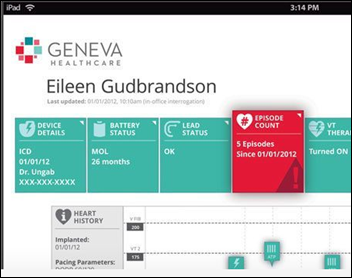
Geneva Healthcare, which offers a pacemaker data management platform that also integrates with other medical devices, raises $1.8 million in financing.
Sales

Princeton HealthCare System (NJ) selects Premier’s integrated supply chain, performance, and technology services.

In England, West Suffolk NHS Foundation Trust signs for Cerner Millennium. I think they went live a few years ago on iSoft’s Lorenzo (now owned by CSC) as part of the now-dead NPfIT. You may infer from the hospital photo that despite having the superior healthcare system, NHS doesn’t suffer from the Edifice Complex of aggressively billing Medicare and using the otherwise restricted profits to erect huge, artistically stunning buildings whose exteriors can’t be viewed by the sick people inside their walls but that stroke the egos of the proud community and the executives in charge.
Azalea Health signs up the physician groups of two Georgia hospitals for its EHR and RCM systems, Dorminy Medical Center and Irwin County Hospital.
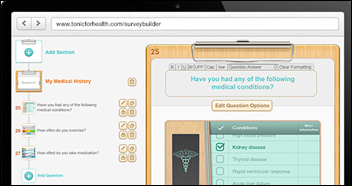
Wake Forest Baptist Medical Center (NC) chooses Tonic Health’s patient survey system.
National physician specialty services company Sheridan Healthcare chooses VitalWare’s iDocuMint ICD-10 code assignment and bill preparation tool for its 2,800 providers.

Basset Healthcare (NY) chooses Strata Decision’s StrataJazz as its complete financial platform.
Urology Centers of Alabama adds Greenway’s PrimeRCM revenue cycle solution, joining its PrimeSUITE EHR/PM system.
People

Louis Leibhaber (Fundamental Succcess LLC) joins WeiserMazars as director of the healthcare group.

Asif Ahmad, CEO of Anthelio Healthcare Solutions, is appointed to the board of orthotics vendor Hanger, Inc.

People Magazine profiles the family of MedAptus employee Jennifer Crowley, whose six-year-old son Padraig has been diagnosed with stage 4 neuroblastoma, the same rare childhood cancer that killed her infant son in 2006. Friends have started a fundraising page to help cover the family’s medical bills. Padraig was started immediately on chemotherapy and will have a long stay at Memorial Sloan Kettering.
Larry Covington, former CEO of Unibased System Architecture, died earlier this week at 75. Services will be next Friday, August 22, in St. Louis.
Announcements and Implementations

Allscripts will integrate Clinical Architecture’s terminology management system, Symedical, with dbMotion.
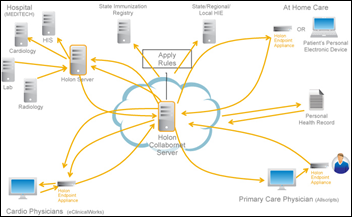
Two Texas hospitals are using Holon’s CollaborNet HIE platform in a state-developed pilot project to refer smokers to a free telephone-based smoking cessation program. Annual referrals jumped from seven to 1,254 after the single-click electronic system was put in place.
4medica announces the release of the first laboratory PHR licensed by MMRGlobal, which is curious in that paying off a patent troll is bragworthy.

The non-profit Healthcare Administrative Technology Association launches to provide advocacy and member education to practice management system stakeholders.

Impact Advisors joins the Epic-IBM team in pursuing the Department of Defense’s EHR bid.

Allscripts and Netsmart will partner to co-develop solutions for their acute care and behavioral health EHRs, respectively.

Nordic announces that it has worked with 100 Epic-using organizations, about a third of all Epic clients. That’s double the company’s 2012 total.
Government and Politics
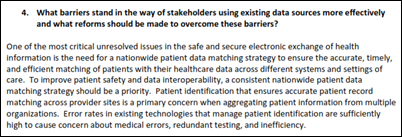
HIMSS EHR Association responds to a request from the Senate Finance Committee asking for comments about the availability of patient data vs. the need for patient privacy. The association says the biggest barrier to using existing data effectively is lack of a patient matching strategy, although it stopped just short of suggesting implementation of a national patient identifier.
CMS reactivates its Open Payments system for reporting drug and device company payments to doctors 11 days after taking it offline. Data problems had misattributed some of the physician payments.

HHS says CMS Administrator Marilyn Tavenner inadvertently deleted emails related to the failed rollout of Healthcare.gov, explaining that she receives so many emails that she regularly hits her Outlook inbox limit and has to clear space. They added that she is supposed to forward or copy the emails for retention as the law requires before deleting emails, but she sometimes forgets. The National Archives and Record Administration says they can probably recover most of the internal emails since they would have been saved by their recipients, but those going to outside addresses may be gone for good. HHS has spent 23,000 staff hours so far trying to retrieve the emails in response subpoenas from Rep. Darrell Issa (R-CA), chair of the House Oversight Committee, so that’s a million-dollar plus delete key.
Innovation and Research
A HIMSS Analytics telemedicine study finds that … well, we don’t know what it finds since they provided a six-page teaser that only included the table of contents. That’s probably enough since the response rate was only 2.7 percent, so any generalization would be suspect.

Speaking of HIMSS Analytics, they should know better than to make this speculative leap even though clueless reporters do it constantly. They did the usual lazy test of mashing up some clinical quality data with their own EMR Adoption Medical scores and found that mortality was generally better in EMR-using hospitals. What the study couldn’t find – despite the headline stating otherwise – is that the EMR cause the improved outcomes. Why couldn’t they use the same detailed Healthgrades data and compare it to each hospital’s EMR go-live date from the HIMSS Analytics database and see if mortality improved afterward? It’s just absurd to try to claim that because EMR-using hospitals have better outcomes that the EMR should get all the credit. The same study found that sepsis mortality rates were higher in EMR-using hospitals, so if you feel an infection coming on and you believe this report, you should seek out any randomly chosen hospital that still uses paper charts.
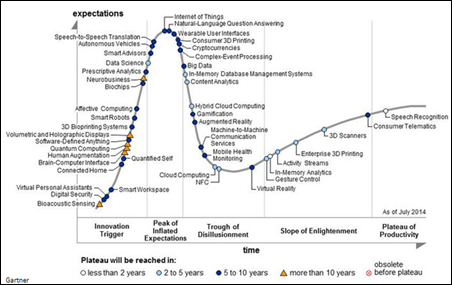
It was love at first sight between Gartner’s Hype Cycle and me years ago. Here’s a current version, which says mobile health monitoring is about to start moving up the Slope of Enlightenment. Big data and Internet of Things are still years away from matching their hype.
The Michael J. Fox Foundation and Intel announce their collaboration to objectively analyze data created from wearable devices to determine the progression of Parkinson’s Disease.
Technology

Apple quietly adds another healthcare expert to its payroll: Divya Nag, founder of StartX Med, an accelerator to commercialize Stanford research. The beta version of iOS 8, released last week, includes support for spirometry data, an option to display medical ID on the lock screen, and health privacy options.
Other

Epic officially breaks from its long-held “no marketing or government relations” position by engaging lobbying firm Card & Associates, run by the brother of the former White House chief of staff under President George W. Bush, as it seeks the DoD’s EHR bid.
Beth Israel Deaconness CIO John Halamka says the hospital is almost ready for Meaningful Use Stage 2’s September 30 deadline, but is struggling with the 10 percent transitions of care threshold since few other providers, especially small physician practices, are capable of receiving the hospital’s information electronically. He adds, “On some days it feels that we have the only fax machine in town and thus it’s hard to fax.” That’s going to be everybody’s problem — so few providers are ready for Stage 2 that the go-getters don’t have anyone to exchange information with.

Former Allscripts CEO Glen Tullman says patients don’t want more engagement with their chronic diseases – they want less engagement so they can get on with their lives. He says that pushing patient engagement is a patronizing approach that will kill off all the technology startups that haven’t made a dent in managing illness anyway. He adds that words such as “tracking,” “monitoring,” and “intervention” are disempowering because they suggest a loss of independence and that nobody’s going to analyze their own data or look up ways to be healthier. Not everything Glen said when he was at Allscripts made sense, but this does.
An article in The Atlantic says that big data from expectant women is being used for both good and bad: good for analyzing fetal DNA to uncover genetic problems, bad because marketers are using it to find purchasers of pregnancy tests and other products so they can launch aggressive marketing campaigns that hope to turn their offspring into long-term customers. Crafty data brokers use browser cookies, page view histories, Facebook posts, and online purchasing histories to build marketing profiles that are sold to any willing buyer. An example is the father who complained to Target that sending coupons for maternity clothing to his daughter encouraged teen pregnancy, only to find that Target knew something he didn’t: she was already pregnant.

Torrance Memorial Physician Networks blames its EMR for allowing one of its doctors to code “homosexual behavior” in a male patient’s problem list. The patient, who is suing the doctor and practice for emotional distress and libel after seeing the entry in his chart after the hospital said they would remove it, says the doctor argued that the medical community is still not sure whether or not homosexuality is a disease. The man’s chart was coded with ICD-9 code 302.0, “ego-dystonic sexual orientation,” a code that was retired in 1987 to describe someone who’s unhappy with their sexuality. According to a spokesperson, “Due to the highly complex software used in creating an electronic medical record, the incorrect code continued to exist in an electronic table only. As a result, this incorrect diagnosis code was included on a paper copy of the record, which was provided only to the patient.”

It’s surprising how much technology is being developed around the medical marijuana industry, but then again the financial alignment is clear. A radiologist and clinical owner develops CannaScan, a real-time, cloud-based validation system that allows Massachusetts police departments to verify that people found with marijuana have been issued a valid prescription. Massachusetts doctors were previously charging patients for ID cards, which the Department of Health found unethical, leading to CannaScan’s claim that it allows the “Good Guys to Weed Out the Bad.” The doctor says the software allows better care coordination and real-time patient management since it supports videoconferencing, scheduling, and notifications, or as he calls it, “A Clinic in the Clouds.”

Weird News Andy utters one of my favorite Monty Python lines in titling this article “I’m not dead yet.” A hospital in Australia apologizes for faxing death notices for 200 still-breathing patients to their family doctors, saying someone accidentally changed the templates involved. At least it’s not just the US healthcare system that’s keeping long-abandoned technology such as pagers and fax machines alive.

WNA also likes a story he calls “a knife on his mind.” A man in China taking a stroll feels pressure in his head, not realizing the cause until a shopkeeper points silently at the five-inch kitchen knife protruding from his skull. It had fallen from the balcony of a high-rise. He’s OK.
Sponsor Updates
- NextGen describes the three tiers of the Patient Centered Medical Home.
- The Meditech Solutions Group within Dell adds DataMotion Direct secure messaging to its portfolio of services.
- CompuGroup Medical US and Teche Action Clinic (LA) team up to celebrate the 2014 National Health Center Week.
- Levi Ray & Shoup announces the release of its Virtual Session Printer Agent.
EPtalk by Dr. Jayne
I attended a CME seminar this week which was actually pretty fun. It was good to get away from the grind of the IT world and remind myself why I became a physician in the first place.
Although most of us continue to have grumbles about payers, conflicting recommendations, and of course EHRs, we also have great stories about our patients and what it means to care for them. The course was on delivery of culturally competent care, which is pretty far away from what we usually deal with in the IT trenches.
Several of the physicians I met were interested in the fact that I gave up a busy solo practice to go into the world of IT. Many were from cities of a size that they may not have dedicated physician IT resources and were interested in how they could get more involved in the decisions that impact their practices and how they care for patients. Most were employed, although there were a few solo holdouts.
A couple are in direct-pay practice situations which I think is a very interesting solution to many healthcare issues. The patient sees the doctor, a fee is assigned, and the patient pays. If the patient wants to submit to insurance, they are given information about the visit so they can self-file. Although one uses EHR, the others don’t. All of them have opted out of Medicare and Medicaid. At least for now, all are happy.
It was strange to talk to physicians who aren’t dealing with MU attestation or the risk of audits. That’s become so much of our world lately. It was invigorating to see whether the grass is greener on the other side or not. I’m not interested in hanging up my IT hat, but I certainly would consider that model if I went back into a continuity-type primary care practice. It reminds me of the physician I saw when I was a kid.
Of course not being connected has its disadvantages. I don’t think I’d take it that far. I like the benefits of EHR too much to go back entirely.
Speaking of e-prescribing, I mentioned that I enrolled in the free Allscripts eRx product through the National ePrescribing Patient Safety initiative. Although the registration process was easy, I still am not set up to e-prescribe. Apparently they need to verify my NPI number. First they asked me to fax proof of my NPI, which I don’t have – I don’t have the original enumeration letter from way back when. I also don’t have a fax machine.
I asked if I could email it. They said yes, but again I need to provide proof. They helpfully directed me to a website where I could look myself up and find my NPI number, which I already knew and submitted to them. I’m not sure why they couldn’t go to that website and verify that the number I provided matches my name, but instead sent me 12 emails and called the office multiple times to tell me to go take a screenshot of a public website and email it to them.
I was finally able to find time to do that and sent it off, so hopefully they’ll get me set up soon. In the meantime, the system isn’t that useful since we don’t have a demographic interface to it and everything has to be manually keyed. Looks like I’ll be going back out to look for other vendors regardless of the outcome with the NPI.

From The Grey Goose: “Re: Allscripts user group meeting in Chicago. My kind of town! Check out this view from my hotel room.” I wasn’t sure initially if this picture was real or from a postcard, but I can only hope I have such a great view when I’m in town for HIMSS. This will be an interesting HIMSS for me since we’re in the middle of consolidating our systems. By the time it rolls around, we’re likely to be under contract with a new vendor. That will put a whole new spin on things.
The Allscripts user group meeting is in full swing and purports to have a Thursday night client event with bands Styx and The Gin Blossoms performing. Sounds like a great time and I hope some of the attendees share pictures. I’m off to the airport now. It will be good to sleep in my own bed before handling the torrent of emails that flooded in while I was away.
What’s your favorite vendor user group client event? Email me.
Contacts
Mr. H, Lorre, Jennifer, Dr. Jayne, Dr. Gregg, Lt. Dan, Dr. Travis.
More news: HIStalk Practice, HIStalk Connect.
Get HIStalk updates.
Contact us online.







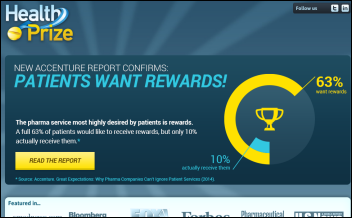





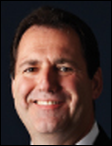





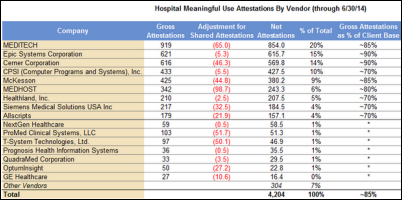


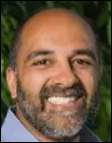







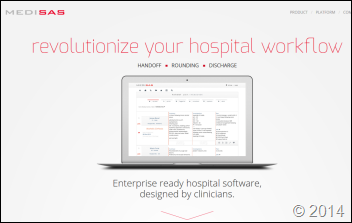
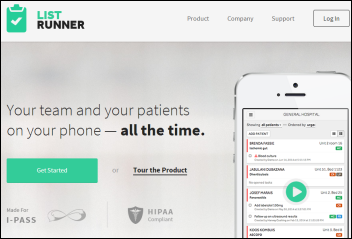

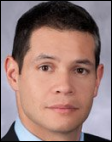
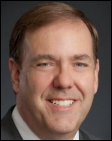


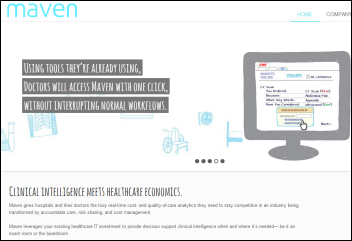





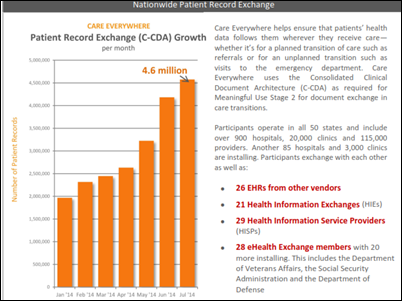
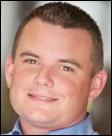


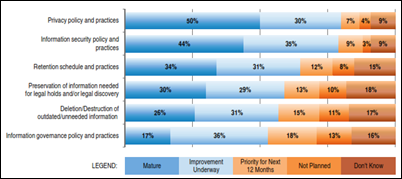



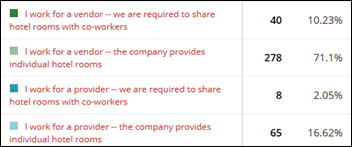

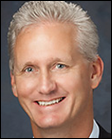


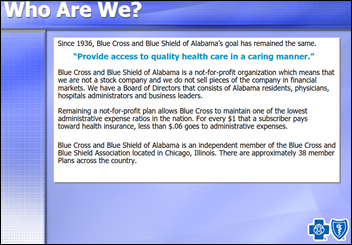












































































































































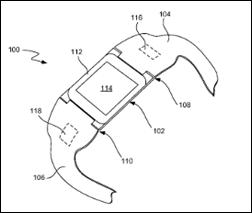










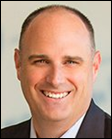




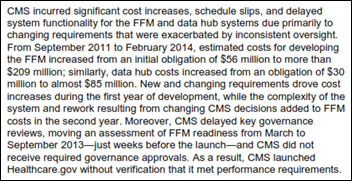
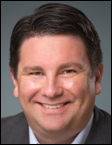


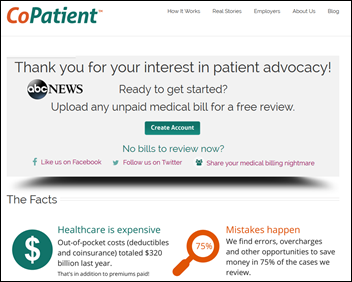

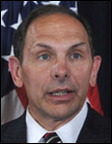



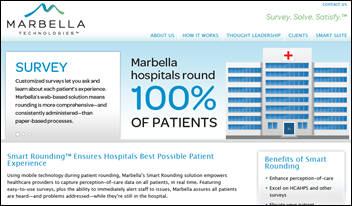
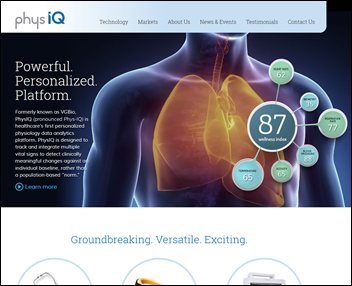










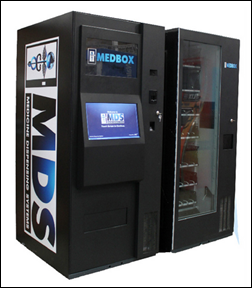
"most people just go to Epic" that's a problem because then EPIC becomes a monopoly in healthcare, if it isn't…